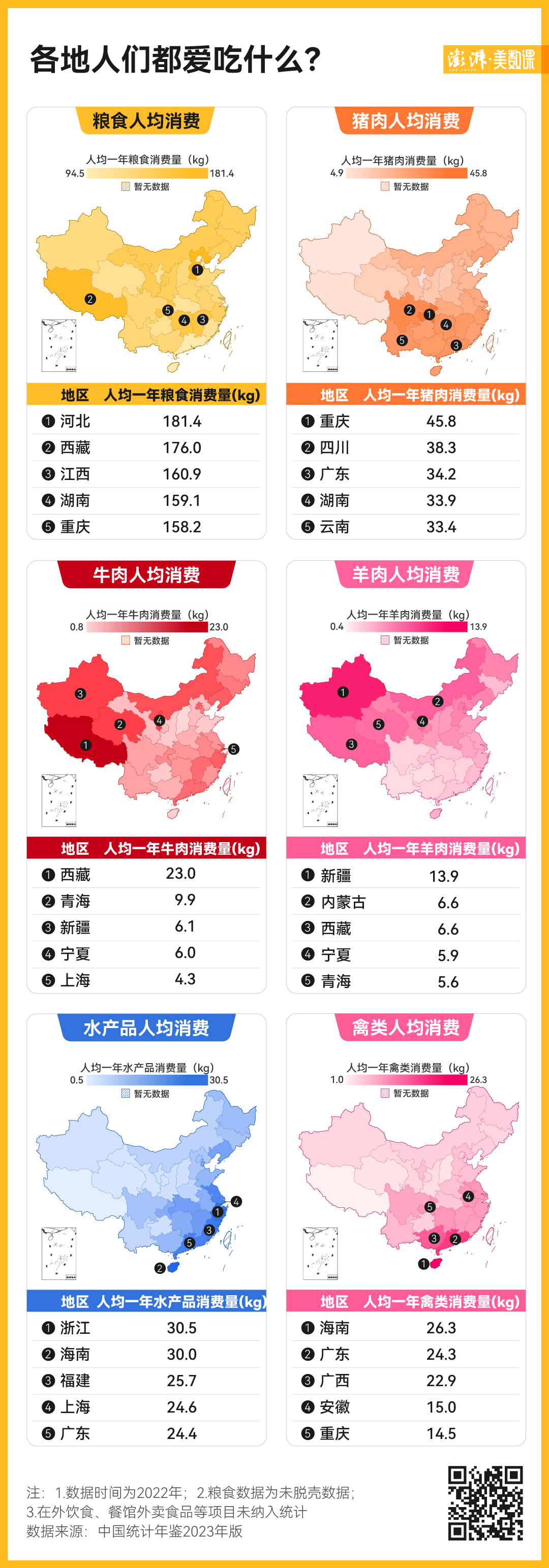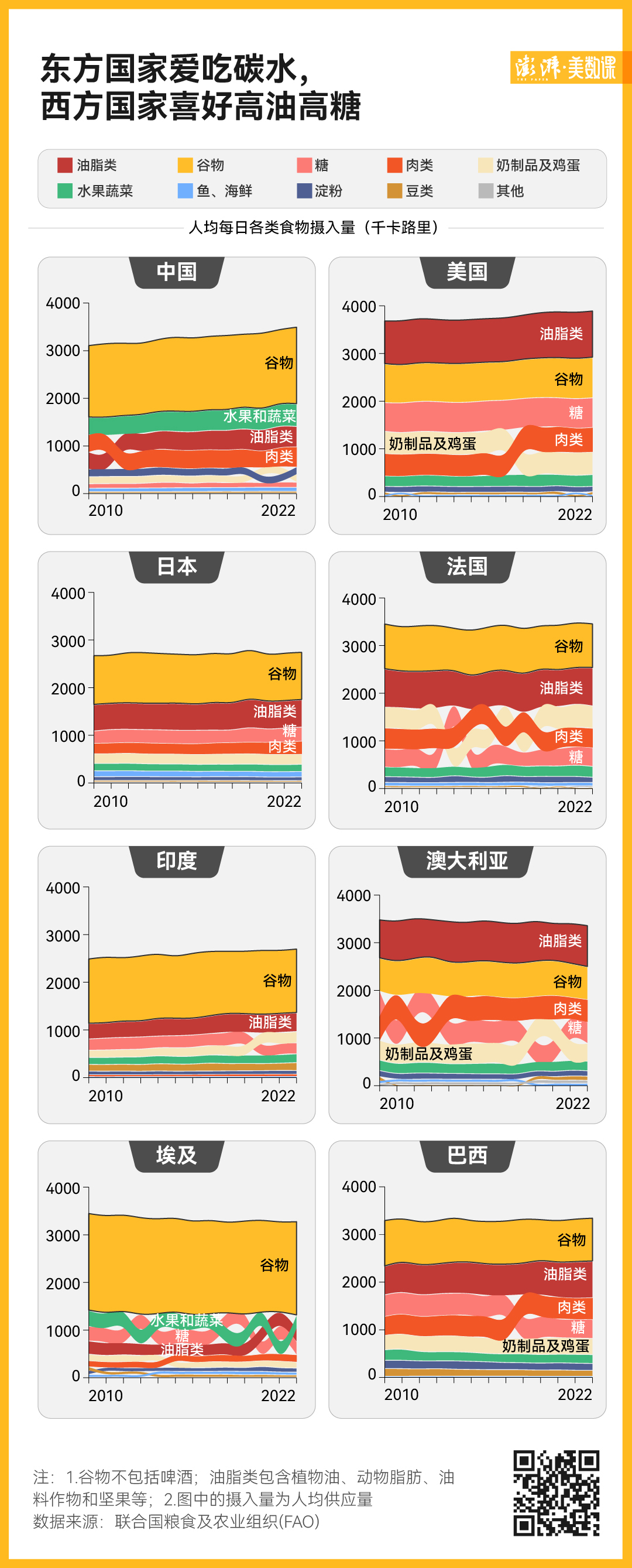"Informed AI News" is an publications aggregation platform, ensuring you only gain the most valuable information, to eliminate information asymmetry and break through the limits of information cocoons. Find out more >>
A Decade of Changes on Chinese Dining Tables: Dietary Diversity and Agricultural Development
- summary
- score



Over the past decade, the Chinese dining table has undergone significant changes. Data shows that Chinese people can consume 700 million pigs, 800 million chickens in Guangdong, and at least 300 million crayfish in Shanghai in a year. These figures reflect the richness and diversity of Chinese culinary culture.
Carbohydrates play a crucial role in the Chinese diet. In 2022, the per capita grain intake in Hebei, Tibet, and Jiangxi was 181.4, 176.8, and 160.9 kilograms, respectively. Taking Hebei as an example, this is equivalent to eating more than three bowls of noodles per person per day.
In terms of meat consumption, Chongqing, Sichuan, and Guangdong are the provinces that consume the most pork, while Xinjiang, Tibet, and Inner Mongolia prefer beef and mutton. In 2022, the per capita meat consumption in China was 70.57 kilograms per year.
Economic development has driven an increase in food supply. In 2022, the per capita grain supply in China increased by 104 kilocalories, equivalent to a bowl of rice. However, the proportion of grain on the dining table decreased from 50.57% ten years ago to 48%.
The significant increase in grain and meat production has made the Chinese dining table more abundant. In 1949, there were only 13 combine harvesters nationwide, with a total grain output of 226.4 billion jin. By 2023, the total grain output had increased by 5.1 times to 1,390.8 billion jin.
Heilongjiang has maintained its position as the top grain-producing province in the country for 14 consecutive years, with a production of 155.764 billion jin in 2023. A new variety of millet in Henan, "Zhonggu 25," achieved a per-mu yield of 625.92 kilograms, setting a high-yield record for summer millet in the North China region.
Sichuan is the largest province in producing pork, beef, and mutton, with a production of 5.44 million tons, enough to feed 1 million people for 77 years. Inner Mongolia's beef and mutton production accounts for 10.1% and 21% of the national total, respectively.
China's per capita grain production has surpassed the internationally recognized food security line of 400 kilograms, reaching 493 kilograms. Local specialty agricultural products such as Dandong strawberries in Liaoning, Zengcheng lychees in Guangdong, Yangcheng Lake hairy crabs in Jiangsu, and Tan sheep in Ningxia are also widely enjoyed.
These changes not only reflect economic development but also demonstrate advancements in agricultural technology and the diversity of culinary culture.
| Scores | Value | Explanation |
|---|---|---|
| Objectivity | 5 | 内容较为客观,平衡了不同观点。 |
| Social Impact | 4 | 引发了较强的社会讨论和关注。 |
| Credibility | 5 | 完全可信,证据充分,来源权威。 |
| Potential | 4 | 具有较高的潜在影响力。 |
| Practicality | 4 | 高度实用,可直接应用于实际问题。 |
| Entertainment Value | 3 | 具有一定的娱乐价值。 |